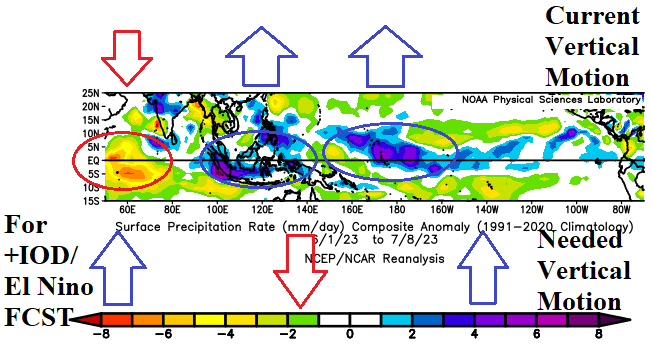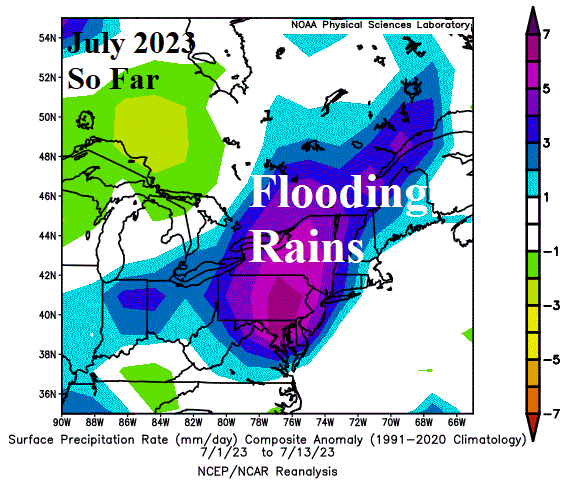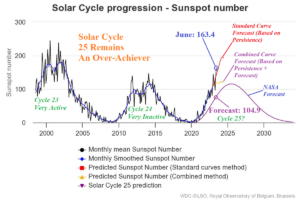
The Lack of El Nino Climate (so far) Inhibits +IOD Evolution
07/11/2023, 11:19 am EDT
The Wetter Pattern Change in the Northeast U.S.
07/16/2023, 12:37 pm EDTHighlight: Over-achieving Solar Cycle 25 Continues!

Fig. 1: Monthly sunspot number since 2000 and NASA forecast plus standard curve/combined curve forecasts.
Discussion: Unexpected was the relatively inactive solar maxima of solar cycle 24 occurring in 2012-14 (Fig. 1). At the time, scientists became concerned that the solar cycle may be entering a period of relative inactivity last observed during 1790-1830 known as the Dalton Minimum. During the Dalton Minimum the global climate cooled although major volcanic eruptions occurred during that time to contribute to cooling therefore the exact amount of global cooling caused by the Dalton Minimum is unclear. NASA projects a similarly inactive sun for solar cycle 25 which, if correct, increases the risk of entrance into a Dalton Minimum. However, observations continue to run counter to that forecast. The June 2023 sunspot number was 163.4 compared to the much lower forecast at 104.9. The standard curve forecast, which accounts for trend only, indicates solar cycle 25 could peak near the last very active solar maxima observed in 2000-2002. During solar cycle maxima, ultraviolet radiation from the sun increases dramatically due to peaking sunspot activity (including solar flares). Solar storms can disrupt radio and satellite communications as well as power grids. In extreme cases, an increase in charged particles in the ionosphere can damage satellites. The risk of these extreme events may increase if solar cycle 25 continues to over-achieve in intensity heading for maxima in 2025.
![Climate-Impact-Company-logo-sm[1]](https://climateimpactcompany.com/wp-content/uploads/2023/08/Climate-Impact-Company-logo-sm1.png)
